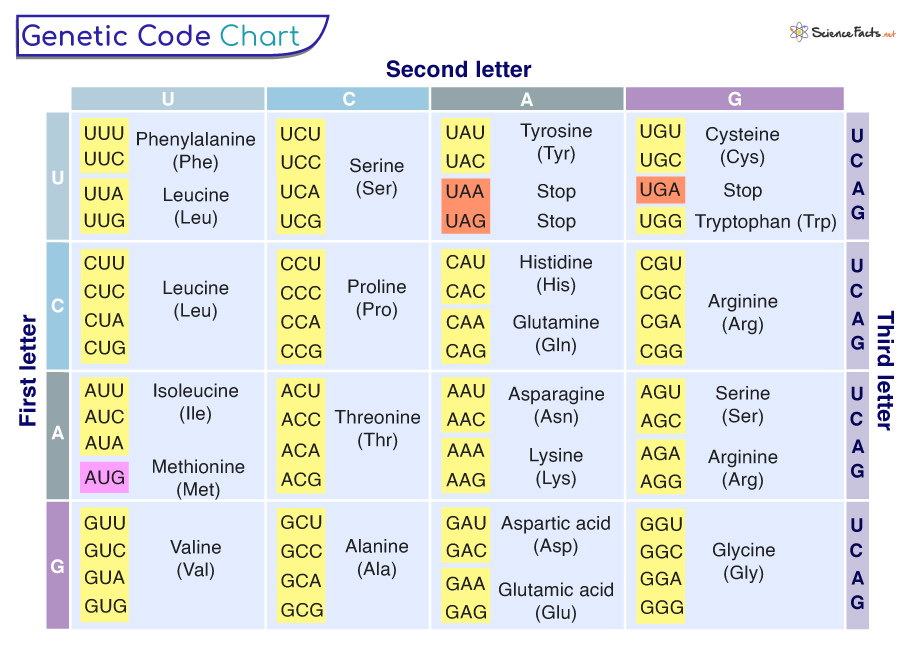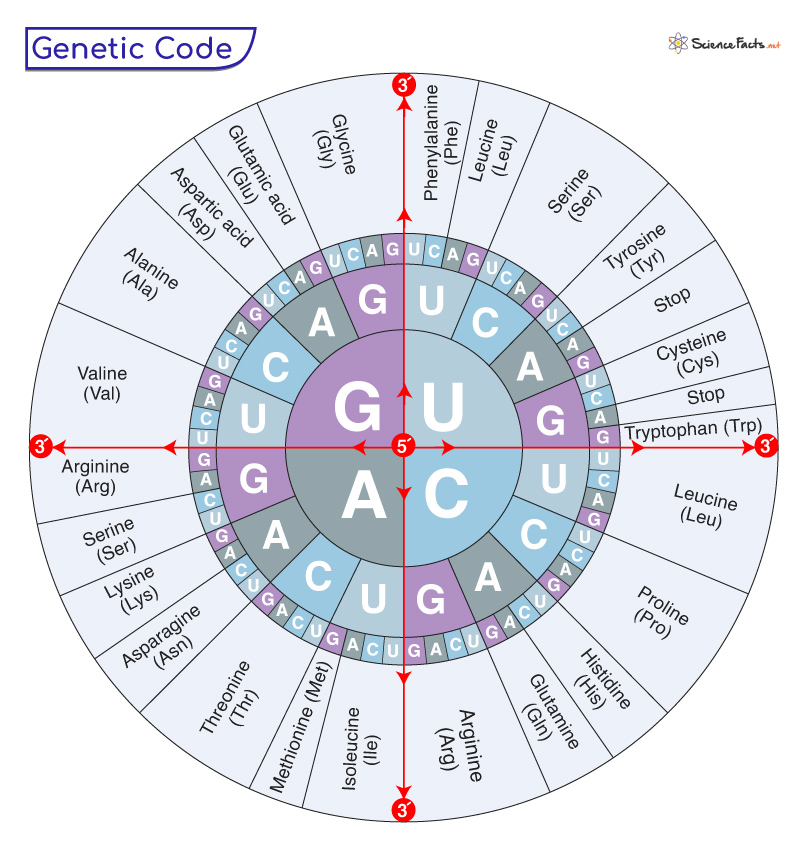It is a triplet code, which means it operates in groups of three nucleotide bases, known as codons. Each codon corresponds to a specific amino acid or a termination signal for protein synthesis.
How does a Cell Interpret the Genetic Code
How was the Genetic Code Deciphered
Characteristics of the Genetic Code
Alternative Genetic Code
The genetic code is the complete set of messages between codons and amino acids (or stop signals). Thus, the primary purpose of genetic code is to direct the synthesis of proteins based on the information in the DNA molecule.
2. Universality
The genetic code remains the same for all living organisms, whether a bacterium, plant, or animal.
3. Non-Ambiguity
While multiple codons code some amino acids, each codon always specifies a single amino acid. Thus, the genetic code is unambiguous, ensuring that the instructions encoded in the code are clear and precise. The precise one-to-one correspondence between codons and amino acids is essential for accurately synthesizing proteins that carry out various biological functions.
4. Redundancy and Degeneracy (One Amino Acid, Many Codons)
The genetic code employs a degree of redundancy, where multiple codons can code for the same amino acid. All four codons, CCU, CCC, CCA, and CCG, encode the amino acid proline. It is crucial because it minimizes the harmful effects of incorrectly placed nucleotides on protein synthesis. This redundancy is not arbitrary; it results from the ‘wobble’ phenomenon—a property in which the third nucleotide of a codon (the ‘wobble position’) can be flexible in its base pairing. It allows a single tRNA molecule to recognize and bind to multiple codons, enhancing the efficiency of protein synthesis. The wobble property also provides a buffer against errors during transcription and translation, contributing to the accuracy of protein synthesis.
5. Polarity
Each triplet is read from the 5’ → 3’ direction. The first base is always 5’, followed by a base in the middle, and then a 3’ base. Thus, the codons have a fixed polarity.
6. Start and Stop Codons
Within the genetic code, there are specific codons that act as ‘start’ and ‘stop’ signals for protein synthesis. The start codon, AUG, codes for the amino acid methionine and marks the beginning of protein synthesis. Stop codons (UAA, UAG, and UGA) signal the termination of protein synthesis, ensuring the protein is released from the ribosome in its complete form. These signals play an essential role in regulating the initiation and termination of protein synthesis. As messenger RNA (mRNA) directs protein synthesis when ribosomes synthesize proteins, the standard genetic code is originally represented as an RNA codon table organized in a wheel.
7. Reading Frame
The start codon is always crucial because it determines where the translation will begin on the mRNA. It also determines the reading frame, which codes for the subsequent amino acids. The same sequence of nucleotides can encode different polypeptides depending on the position of the start codon and, therefore, the frame in which the codons are read. They are:
Attributing one or two of the STOP codons to an amino acidBoth GUG and AUG can function as start codons, although GUG codes for valineThe genetic code in mitochondria differs from the standard genetic code used in the cell nucleus

